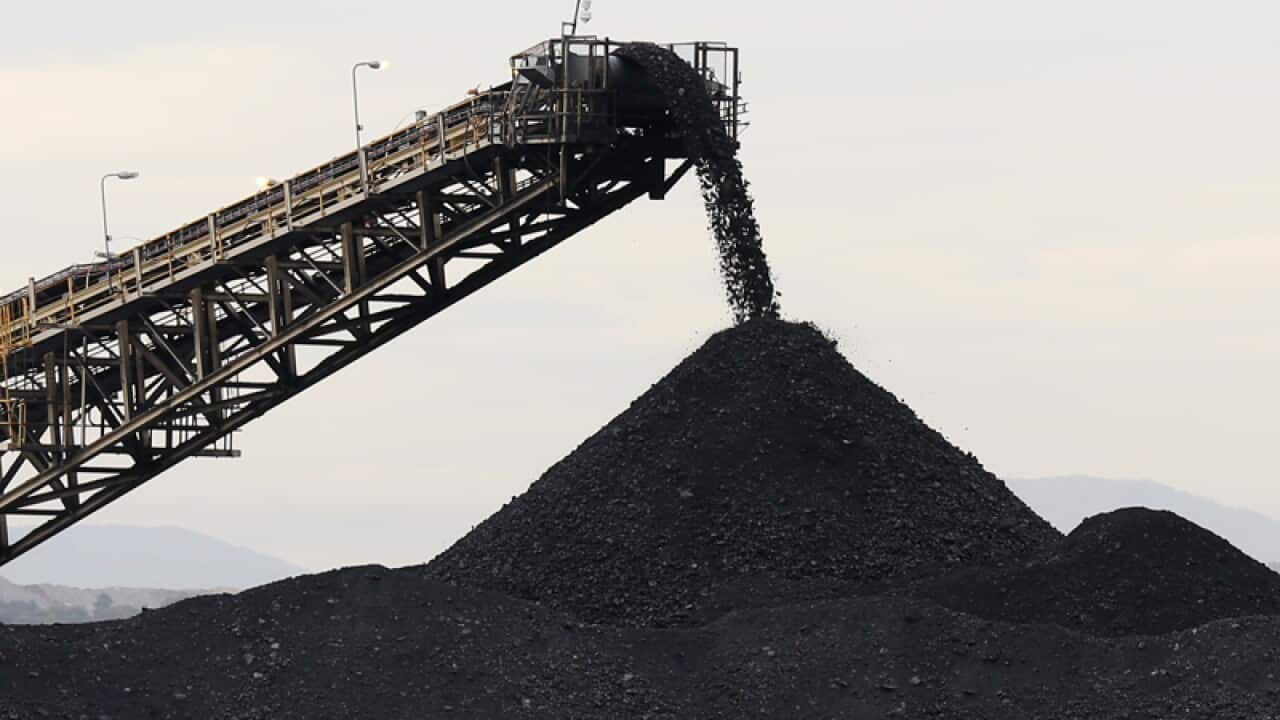What is Adani's Carmichael coal mine?
The proposed Carmichael Coal and Rail Project is comprised of six open-cut coal mines and five underground mines, a 388km rail line and a new terminal at Abbot Point Port near Bowen.
Located on Wangan and Jagalingou land in central-western Queensland, around 160km north-west of Clermont, the $21 billion project would be Australia’s biggest coal mine.
Covering more than 200 square kilometres, the mine would trigger around 60 million tonnes of emissions a year, with coal being exported to India.
Indian mining company Adani, which funds the project, claims the development will bring thousands of jobs and economic prosperity to the region.
The project has faced a series of hurdles since its initial approval.

Source: Greenpeace
Timeline
May 2014
Queensland Government gives preliminary approval.
July 2014
Then-federal Environment Minister Greg Hunt grants approval for the mine to proceed, with 36 “strict” conditions.
October 2014
The Wangan and Jagalingou Traditional Owners Council rejects an Indigenous Land Use Agreement with Adani, fearing the mine would destroy their ancestral lands.
April 2015
The Native Title Tribunal overrides objections of traditional owners, granting two mining licences to Adani on the basis that the project is in the public interest.
May 2015
A group of Wangan and Jagalingou traditional owners, led by Adrian Burragubba, lodge an appeal against the Native Title Tribunal’s decision, which Mr Burragubba claims was based on misleading information provided by Adani.
Mr Burragubba has since lodged an appeal, and the case is ongoing.

Anti-mining protesters gather in Brisbane. Source: Supplied
June 2015
August 2015
The Federal Court overturns the approval of the mine, after Environment Minister Greg Hunt failed to consider conservation advice on two endangered species in the area.
The decision comes in response to an earlier legal challenge by the Mackay Conservation Group under the Environment Protection and Biodiversity Conservation Act.
14 October 2015
The Federal Environment Minister re-approves the project, after considering additional information from environmental groups.
9 November 2015
The Australian Conservation Foundation challenges the legality of the project’s re-approval, contesting whether the Environment Minister adequately considered the project’s impact on climate change and the Great Barrier Reef.
Federal Court hearings take place in May 2016, before the court dismisses the legal challenge in August this year.
In September 2016, the Australian Conservation Foundation appeals the decision. The case is still ongoing.
December 2015
The an Adani boss failed to disclose his involvement in running a company in Africa guilty of “serious environmental breaches”
February 2016
The mine receives its final environmental approval from the Queensland Government.
April 2016
A group of traditional owners vote to authorise an Indigenous Land Use Agreement with Adani, but other traditional owners .
Meanwhile, the State Government approves mining licences for the project.

A protester at an anti Adani rally. Source: SBS
Where are we now?
On October 2, the Palaszczuk Government invoked special powers, elevating the project’s status to remove red tape and pave the way for construction to begin in 2017.
At state level, Adani now only needs water licences before it can proceed.
This week, Wikileaks emails revealed the , a conservation group campaigning against the mine, has received US funding, prompting the federal government to consider imposing laws to make it harder for environmental groups to oppose mining projects in court.
Court cases with the Australian Conservation Foundation and traditional owners are still ongoing, with Adrian Burragubba to oppose the Adani development.
The project continues to capture national, and international attention, prompting some to ask,










